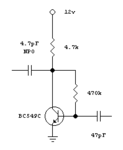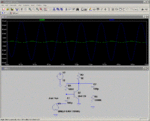neazoi
Advanced Member level 6
Hi I have built this little HF RF preamplifier.
Can you please simulate for me? I am interested in it's gain at 2MHz, 7MHz, 14MHz, and 28MHz
Note that it is the BC547C, the C version with a higher beta.
Can you propose of any higher gain HF amplifier circuit with one transistor only?
Can you please simulate for me? I am interested in it's gain at 2MHz, 7MHz, 14MHz, and 28MHz
Note that it is the BC547C, the C version with a higher beta.
Can you propose of any higher gain HF amplifier circuit with one transistor only?

